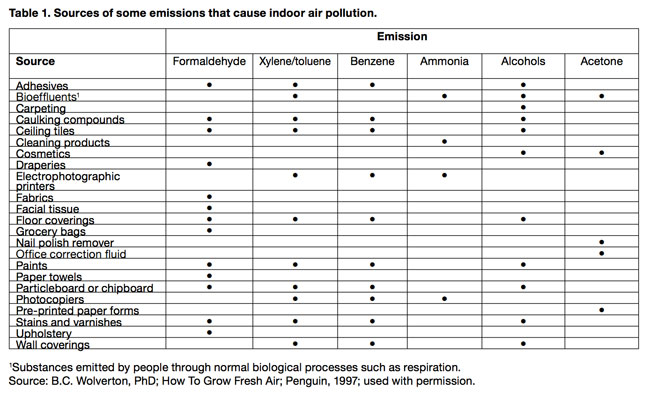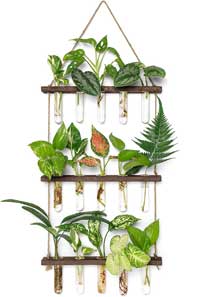
There are several houseplants that have shown to improve indoor air quality. In fact, the Mother Nature Network recommends 15 varieties including spider plants. Plants that clean the air fight benzene formaldehyde, carbon monoxide and xylene (a solvent used in leather, rubber and printing industries).
That is all well and good. However, not all houseplants are easy to take care of. Some are high maintenance and require lots of attention (ie. the ficus tree).
Without enough humidity, light and air circulation, these demanding plants can end up looking sickly most of the time. When this happens, they aren’t as helpful at improving the indoor air quality as their healthier peers.
This is why I believe it’s a good idea to stick with the easy-care houseplants. They don’t need lots of attention and are very forgiving when it comes to watering, light and their surrounding environment.
Here are My Favorite Low-Maintenance Plants that Clean the Air
- Snake Plant
- English Ivy
- Heart Leaf Philodendron
- Golden Pothos
- Dracaena
- Peace Lily
- and, of course, the Spider Plant
Why do These Plants Clean the Air Better?

An article from the University of Minnesota Garden Extension explains that most indoor air-cleaning plants initially existed in tropical or sub-tropical forests.
In this environment, they received filtered light through the taller trees, and their leaves were designed to photosynthesize efficiently under these conditions. Therefore, they can proficiently process gasses in the air.
The NASA studies that tested these pollution-minimizing plants suggests using 15 to 18 medium sized houseplants in an average 1,800 square foot home. Less foliage would produce less significant results.
How Does the Air Purification Process Work?
According to research study published by the Department of Tropical Plant and Soil Sciences at the University of Guam:
“Plants absorb volatile organic compounds from the air into their leaves and then translocate them to their root zone, where microbes break them down. Microorganisms in the soil can use trace amounts of pollutants as a food source.”
The plant’s biological processes can even destroy some of these organic chemicals. The plant’s roots can also assist in the air purification process as the air moves through the soil.
Which Toxins and Off-Gases do the Plants Absorb?
Live Science reports that plants are very efficient at absorbing gases through pores on the surface of their leaves. This is part of the process where plants convert C02 (carbon dioxide) as well as light into chemical energy to stimulate growth, otherwise known as photosynthesis.
In studying the air-cleaning capabilities of houseplants, scientists realized that their leaves can absorb much more than C02. In fact, there are many volatile organic compounds (VOCs).
For example:
- Benzene (found in some plastics, fabrics, pesticides and cigarette smoke)
- formaldehyde (found in some cosmetics, dish detergent, fabric softener and carpet cleaner)
Why is Indoor Air So Bad Anyways?

An article on PubMed states that newer, more energy-efficient buildings can actually create a higher concentration of indoor pollutants due to the fact that they are designed to allow for minimal indoor and outdoor air exchange.
As more and more people spend their days indoors behind computer screens, it makes sense that the air quality issue is a growing concern. Whether we bring more fresh air into our buildings, spend more time outdoors or add greenery to our indoor environments, it is an easy, inexpensive way to potentially improve our health.
With all that said, I think that it’s important to include a critical review of these air filtering findings as stated on BuildingEcology.com.
“However, a careful examination of studies does not find convincing evidence that the use of plants indoors can result in meaningful reductions in indoor VOC concentrations.”


